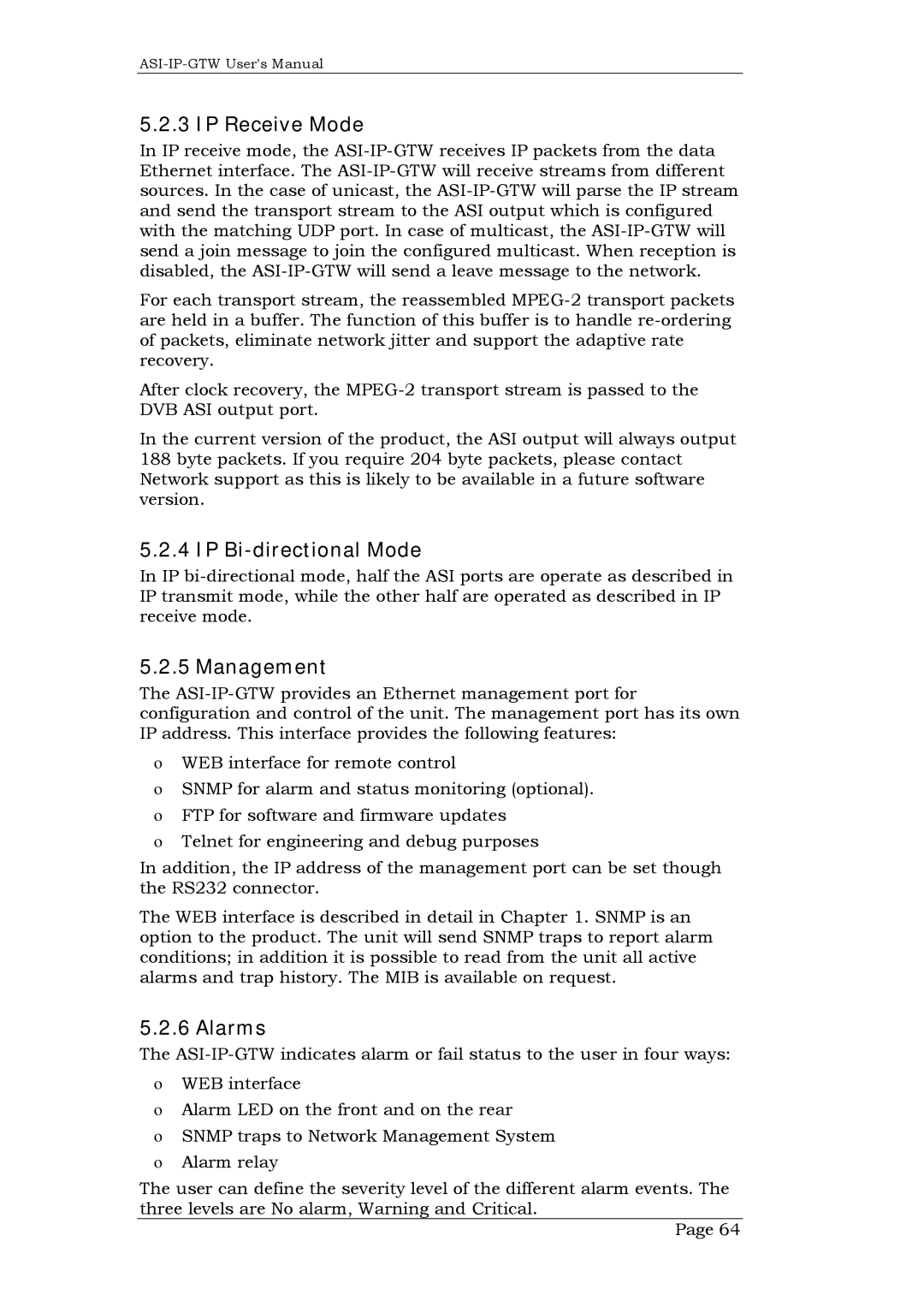
5.2.3 IP Receive Mode
In IP receive mode, the
For each transport stream, the reassembled
After clock recovery, the
In the current version of the product, the ASI output will always output 188 byte packets. If you require 204 byte packets, please contact Network support as this is likely to be available in a future software version.
5.2.4 IP Bi-directional Mode
In IP
5.2.5 Management
The
oWEB interface for remote control
oSNMP for alarm and status monitoring (optional). o FTP for software and firmware updates
o Telnet for engineering and debug purposes
In addition, the IP address of the management port can be set though the RS232 connector.
The WEB interface is described in detail in Chapter 1. SNMP is an option to the product. The unit will send SNMP traps to report alarm conditions; in addition it is possible to read from the unit all active alarms and trap history. The MIB is available on request.
5.2.6 Alarms
The
oWEB interface
oAlarm LED on the front and on the rear
oSNMP traps to Network Management System o Alarm relay
The user can define the severity level of the different alarm events. The three levels are No alarm, Warning and Critical.
Page 64
